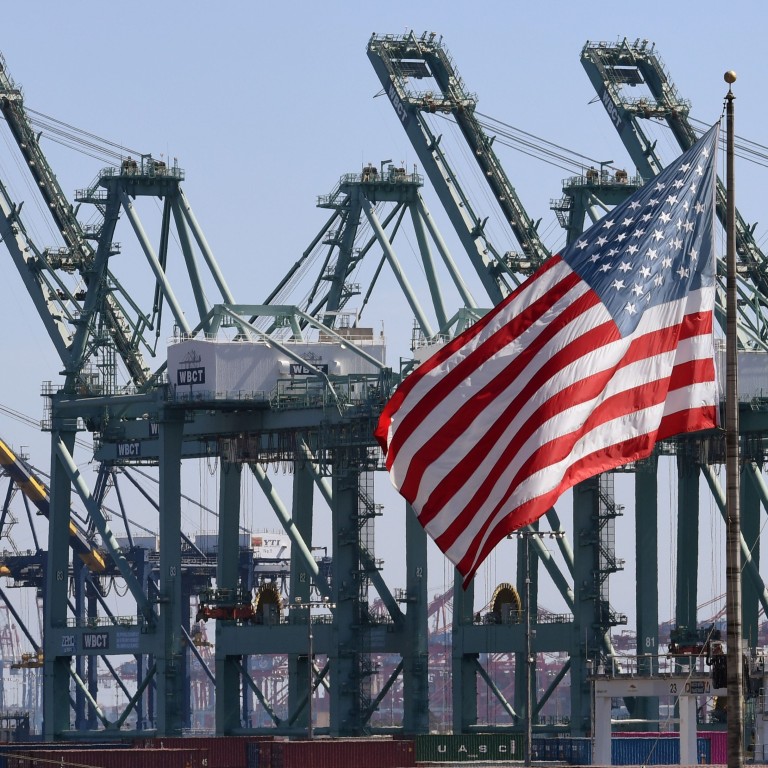
Nanosys, Californian maker of rare earths alternative, could be hit by tariffs on both ends of US-China trade war
- Nanosys develops alternatives for rare earths used in televisions, flat-panel displays
- ‘Significant’ portion of its quantum dot products are shipped to China and face tariffs
Nanosys, a California developer of alternatives to rare earth elements used in televisions, tablets and flat-panel computer displays, has not been able to escape the escalating trade war between the United States and China, according to its chief executive.
As trade tensions have risen between the world’s two largest economies recently, US lawmakers and others have raised concerns that China might use its dominance in rare earths – materials used in hi-tech devices ranging from mobile phones to electric vehicles – to retaliate against the US by cutting off or reducing worldwide supply.
As a result, technology companies, electric-vehicle makers, the US government and others have been seeking alternatives as well as new sources of rare earths. Companies are also exploring ways to recycle rare earths from discarded devices.
Nanosys has manufactured quantum dots – incredibly small phosphors that mimic the qualities of some rare earth elements – since 2013 for use in televisions and other flat-panel displays.
A large portion of its quantum dots are shipped directly to China or go there via South Korea or Japan, Jason Hartlove, Nanosys president and chief executive, said.
As a result, the company’s customers can face tariffs when they import the dots into China and then when partly assembled televisions or fully assembled products are shipped to the US, he said.
“As a business leader, I am very concerned about the tariffs. A significant amount of our material that we ship does go directly into China,” Hartlove said. “We kind of get hit on both ends with this situation because we are actually one of the few people who are actually selling physical goods that go into consumer products.”
Televisions, flat-panel displays and computer tablets are potentially facing 25 per cent tariffs if the Trump administration moves forward with new tariffs on US$300 billion of Chinese-made goods this summer. Partly assembled devices are already facing 25 per cent levies in the US, and China has retaliated with its own tariffs on a variety of products from the US.
Will China use ‘nuclear option’ of banning rare earth exports to US?
Rare earth minerals themselves have avoided US tariffs.
The 17 elements, with names like europium and ytterbium, share similar chemical and physical properties and can be difficult and expensive to refine and extract. China has dominated the industry since the 1980s, accounting for seven of every 10 metric tonnes mined worldwide last year and serving as the main processor of the ores, according to the US Geological Survey.
The US Commerce Department published a 50-page report on Tuesday, outlining a series of potential measures to reduce the US’s reliance on Chinese-produced rare earths.
Founded in 2001, Nanosys manufactures its quantum dots at a 60,000 sq ft facility in Milpitas, California, about a 45-minute drive southeast of San Francisco.
The dots, phosphors that create the red, green and blue lights that allow televisions and other displays to function, are 10,000 times narrower than a human hair or slightly bigger than a molecule of water. The company has the capacity to make more than 6 million 60-inch televisions annually.
“We have actually added a significant amount of capacity in our plant and so we are looking forward to filling that up in the coming years. Our overall volume, of material that we're shipping to customers, has been growing by more than 50 per cent a year,” Hartlove said. “We foresee that that's just going to continue on the basis of better performance [of our products] than your white LED phosphors, traditional rare earth phosphors.”
US moves to reduce reliance on China for rare earths
Hartlove said it is possible the company could see further acceleration of orders if China were to reduce rare earth shipments, or if the cost of rare earths rises.
He said its customers, anticipating higher tariff costs, have been asking if Nanosys can lower its costs for the quantum dots and asked the company to accelerate shipments ahead of the latest round of tariffs taking effect.
Hartlove also said that Nanosys had received calls from companies exploring the possibility of using its products for other applications, such as the solar industry, but that Nanosys has not been asked to add capacity because of concerns over potential shortages of rare earths.
What leverage does China’s rare earths dominance hold in trade war?
He said the lead time to add capacity at its plant is about a year – less than what it would take to add mining capacity or refining capacity for rare earths. That said, he would like a quick resolution of the trade war.
Tariffs – on the US and the Chinese sides – “basically creates a situation that drives up the price to the end consumer. Consumer buying behaviour follows a pretty well-established price elasticity curve. At US$400, a fairly large number of people buy televisions and a fairly large number of sets get sold. If you put 25 per cent on top of that, or whatever the number is, suddenly you have a very significant roll-off in the volume of televisions bought. That's again going to hurt our business.”

